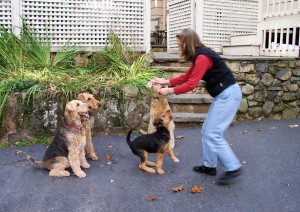Saving Them All: At What Cost?
No Kill. This is a buzzword in the rescue and shelter community. But to the majority of said community, it is an offensive term. The use of this term implies that all else but no-kill aficionados are to be scorned. No one wants euthanasia. But the sad reality is that it’s not possible to save them all responsibly.
The above paragraph will cause a huge uproar among some rescue circles. But not the responsible ones. Don’t misunderstand me. All lives are worthwhile. But there are worse fates than euthanasia. Warehousing is sadly common among the save them all fans. What does warehousing mean? Unfortunately, it entails keeping animals technically alive but with little regard to quality of life. This can include crating or kenneling for long periods without human interaction and without enrichment. Endless hours without physical exercise or mental stimulation is not healthy for any living being. Why would it be okay for an animal? Is alive really better in this circumstance? Would the animal experiencing this agree with the no kill crowd if asked? I tend to doubt it.
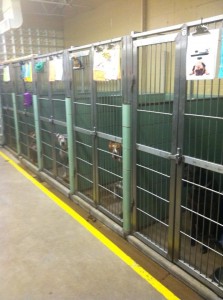 Yet there are ‘rescuers’ who only care about whether a dog is alive. They consider this a win. Dog after dogs are taken in by some rescues, into foster homes that already have too many to meet all their needs. Dogs are crated, with little interaction and exercise. Their emotional and physical needs are only marginally met. They spend long hours with little to do. In other scenarios, they are placed into any home that offers, with little to no screening to determine suitability. These homes often are fickle in their preferences and when the dog isn’t perfect, the dog is given up for the next ‘save’. These dogs go from home to home, often being given away with no regard to where they land. The emotional toll this takes on an animal can be permanently damaging. The lucky ones find a place that is home for life, hopefully a home that is good to them. The unlucky ones are victims of abuse and neglect, worse off than their life wherever they started from.
Yet there are ‘rescuers’ who only care about whether a dog is alive. They consider this a win. Dog after dogs are taken in by some rescues, into foster homes that already have too many to meet all their needs. Dogs are crated, with little interaction and exercise. Their emotional and physical needs are only marginally met. They spend long hours with little to do. In other scenarios, they are placed into any home that offers, with little to no screening to determine suitability. These homes often are fickle in their preferences and when the dog isn’t perfect, the dog is given up for the next ‘save’. These dogs go from home to home, often being given away with no regard to where they land. The emotional toll this takes on an animal can be permanently damaging. The lucky ones find a place that is home for life, hopefully a home that is good to them. The unlucky ones are victims of abuse and neglect, worse off than their life wherever they started from.
Rescue can be an addiction, like so many other addictions that cause the people acting on them to feel good when they ‘win’. Numbers are more important than quality to so many. The need is for self approval and self importance, not the improvement of a dog’s life. Rescuers patting themselves on the back, the worse the story, the more attention they get for the ‘save’. Then the ‘saved’ dogs get shipped off to some foster home that is no better than a warehouse and the hell begins anew.
I am truly sorry if this comes off as cynical but it’s a sad reality for so many more than it should be. This doesn’t mean that the most shared stories of dogs in dire straits are bad rescuers. Each situation is individual and most rescuers who take in dogs who were victims of terrible circumstances are just trying to do a good thing. But there are many others who are looking for their 15 minutes, less about the dog, more about them.
These are the same individuals and groups who think every dog can be saved, no matter the cost to the rescue, the community and the other dogs who will die because of the effort to save one. Let me preface this by saying that I will be the first one to offer to help when a dog with a committed family wants assistance with modifying his or her issues. A committed family willing to implement proper management and a proper behavior modification protocol in order to make things safer for the community and their dog is to be commended. That is best case scenario for a successful behavior modification.
The same type of issue in a dog who is available for adoption is not going to be as workable in many scenarios. Consistency makes for a successful outcome. Consistency is often lacking in rescue and shelter scenarios, when the issue is severe. Situations such as severe stranger aggression or severe dog aggression pose a danger to so many. Placing a dog who has already killed another dog and seriously attacked others, leaves a very small and unrealistic criteria for a successful adoption. Yet there are people who rally for dogs like this to be shipped to some imaginary unicorn location where they can be ‘fixed’ fast. That isn’t even a possibility yet some ‘trainers’ make such promises.
I hear these ‘rescuers’ say that human errors caused the dog’s issues. They did indeed but we are not placing dogs with aliens. Until we accept that we are all humans and all capable of these errors and stuff happens, then we will continue to make mistakes. These mistakes mean that we place dogs who are simply not fixable in the situations they are in, into a household unequipped to handle them.
I see post after post on Facebook about dogs that ‘need some work’, just needing a place they can go with ‘no other dogs, no cats, no kids, no men’, etc. I see post after post about dogs that need to ‘live with a single woman who never has visitors’. Sure, these homes exist but they are few and far between and they are the ones who already have that dog. There are people taking in dogs like this who have other dogs, who crate and rotate dogs in different parts of the house. This is a very stressful way to live. Accidents happen. They really do. Humans will be human. And then we are back to the lack of appropriate enrichment for the dog with the issue and once again, quality of life rears it’s ugly head.
Lest you declare me as advocating for mass genocide of dogs, I am wholeheartedly supportive of proper attempts at behavior modification with the appropriate commitment level, with the dogs that fit these descriptions. If there is a place where this can happen and given the proper attention, then almost every dog deserves a chance. But here is where the attention to common sense and reality must come into play. If you have done everything that could be done and the dog you are trying to help is not improving, despite appropriate attempts at behavior modification, medication, vet screenings for organic causes and people and/or animals in your care have been seriously injured, then you owe it to those people and other animals to take a long hard look at the situation. No one should be pressured to not give up just because others don’t share their own common sense. Pressure from others to ‘try just one more thing’ causes guilt on the part of the person trying to help. That is hardly helpful.
Every life is worth putting an effort to save. But an effort should not involve placing so many others in danger in any given foster home or the public at large. It also should not be mean that perfectly lovely dogs with wonderful temperaments in overcrowded shelters be placed in danger of euthanasia simply because of space. What about their right to being saved? I realize that this is an extremely controversial subject and emotions run very high on both sides. But we all need to stop and realize just how many good dogs are dying because of our choices. We need to consider quality of life and not just being alive.
Everyone has different personal beliefs about life after we leave this earth. I don’t expect anyone else to agree with mine. But mine are that this is only but one realm of our existence and that nothing is to be feared about leaving this realm. I believe that leaving this realm doesn’t mean an end to consciousness. Perhaps that helps me make hard decisions easier than some who don’t share this belief. In any case, I believe we have an obligation to the animals in our care to do the best that we can by them while we are with them and that includes letting go when we should. Peace to you all in your own decisions on this subject. Feel free to share your thoughts on this subject in the spaces below but I ask that you please keep it classy.
Posted in: Projects
Leave a Comment (22) →


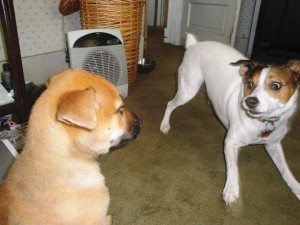

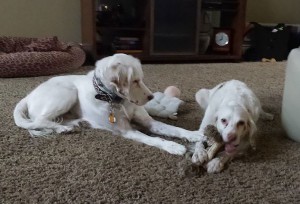

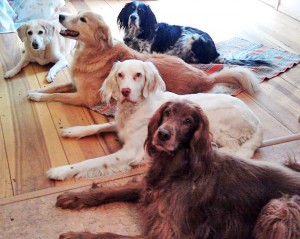

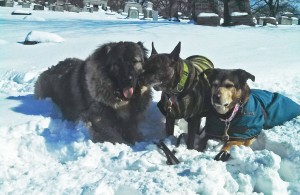
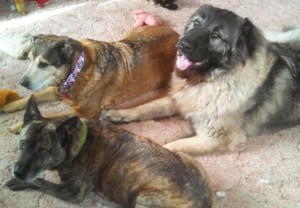 But I am human, I forget. I forgot to say a dog’s name in yesterday’s training session. Instead I simply said “paw”. Siri delivered a right hook to Trent. Poor Trent took it well. They are often offering behaviors without being asked when one is asked. Thankfully, my dogs get along well with each other. So aside from the insulted look on Trent’s face that was there ever so briefly, it’s all good. And I got a fresh reminder that consistency is important on the part of the human.
But I am human, I forget. I forgot to say a dog’s name in yesterday’s training session. Instead I simply said “paw”. Siri delivered a right hook to Trent. Poor Trent took it well. They are often offering behaviors without being asked when one is asked. Thankfully, my dogs get along well with each other. So aside from the insulted look on Trent’s face that was there ever so briefly, it’s all good. And I got a fresh reminder that consistency is important on the part of the human.



